Abstract
The in vitro activity of E-1040 [(6R,7R)-3-[(4-carbamoyl-1-quinuclidinio)methyl]-7-[2-(5-amino-1,2 ,4- thiadiazol-3-yl)-(Z)-2-methoxyiminoacetoamido]-8-oxo-5-thia- 1- azabicyclo(4,2,0)oct-2-ene-2-carboxylate], a novel cephalosporin, was compared with that of ceftazidime, cefpirome, cefepime, imipenem, and gentamicin. E-1040 inhibited 50% of members of the family Enterobacteriaceae, Pseudomonas aeruginosa, and Haemophilus and Neisseria species at less than or equal to 0.25 microgram/ml, and the MIC for 90% of strains tested ranged from 0.06 to 2 micrograms/ml. It was two- to fourfold more active than ceftazidime and similar in activity to cefepime and cefpirome. It inhibited Enterobacter, Citrobacter, Serratia, and Morganella species that were resistant to ceftazidime. E-1040 inhibited imipenem-, piperacillin-, aztreonam-, and tobramycin-resistant P. aeruginosa. It was less active against Xanthomonas maltophilia and P. cepacia but inhibited other Pseudomonas species. The activity of E-1040 against staphylococci and hemolytic streptococci was similar to that of ceftazidime, but E-1040 was less active than cefepime and cefpirome. It did not inhibit Bacteroides spp. There was no inoculum effect or medium effect, and MBCs were within a dilution of MICs. Plasmid beta-lactamases TEM-1, TEM-2, TEM-3 (CTX-1), SHV-1, Staphylococcus aureus, PSE, and CARB did not hydrolyze E-1040. Chromosomal beta-lactamases P99 and K-1 did not hydrolyze E-1040; E-1040 had poor affinity for these enzymes, with a Ki of greater than 100 microM.
Full text
PDF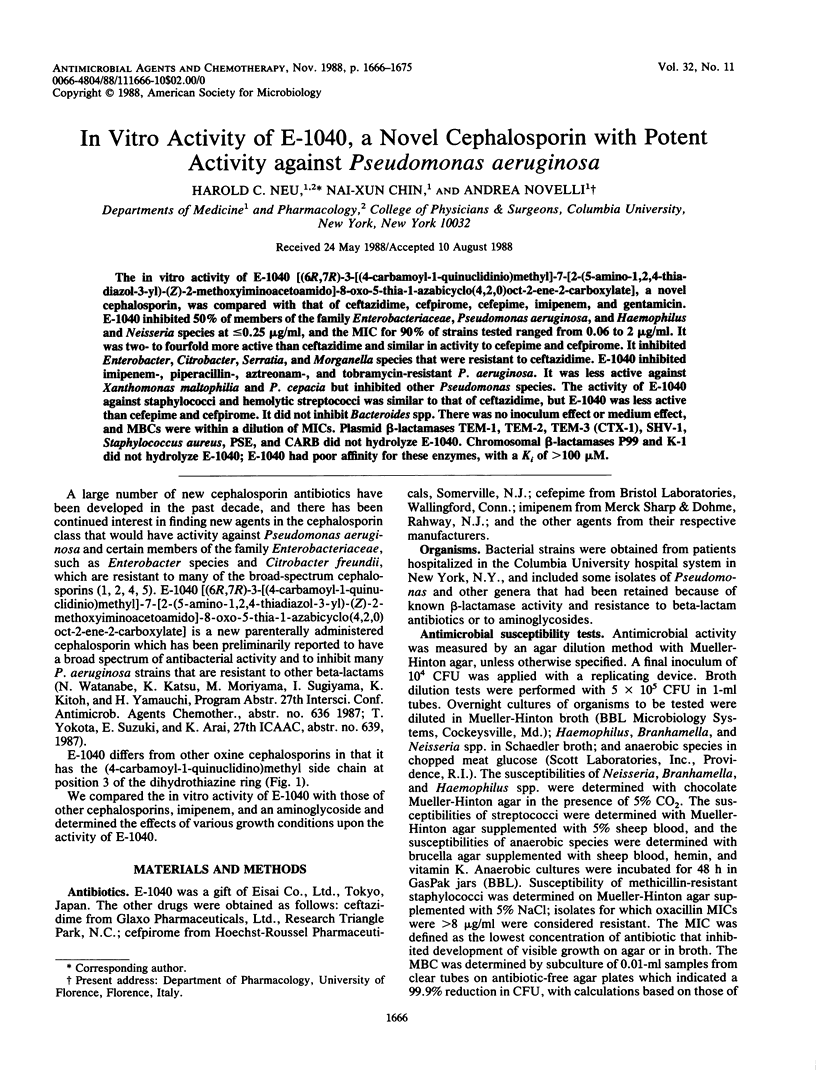
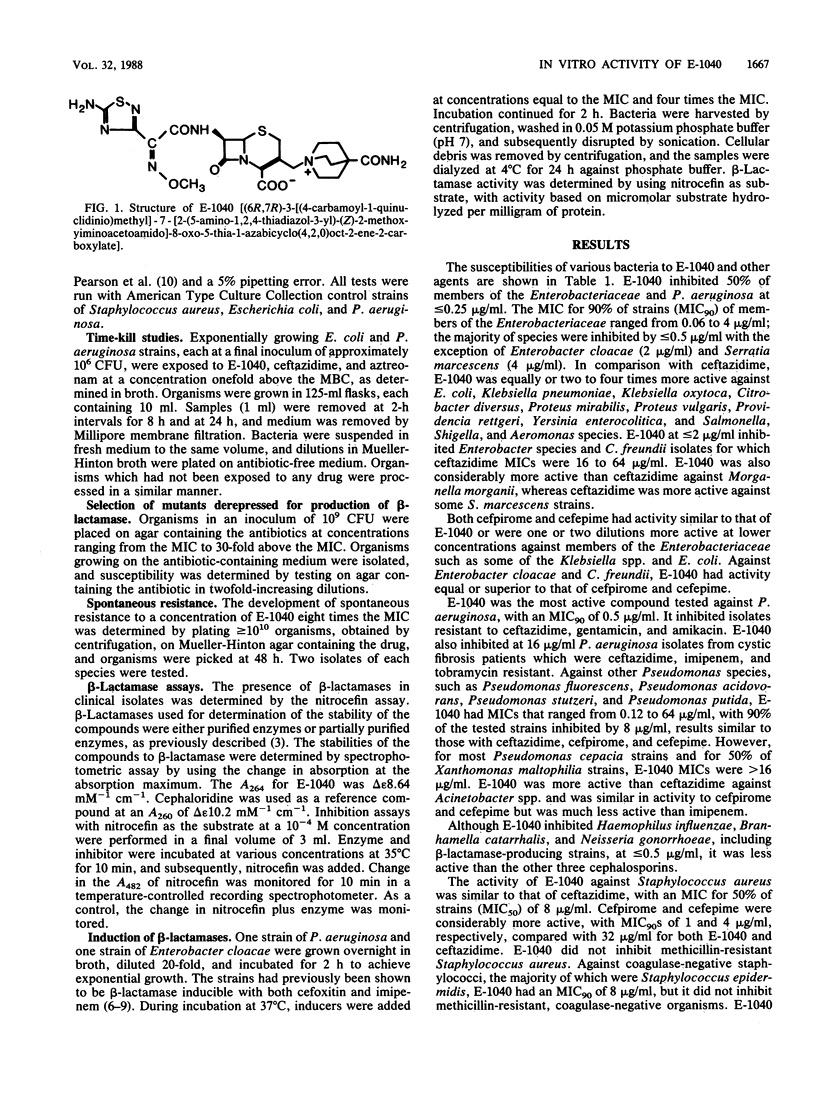
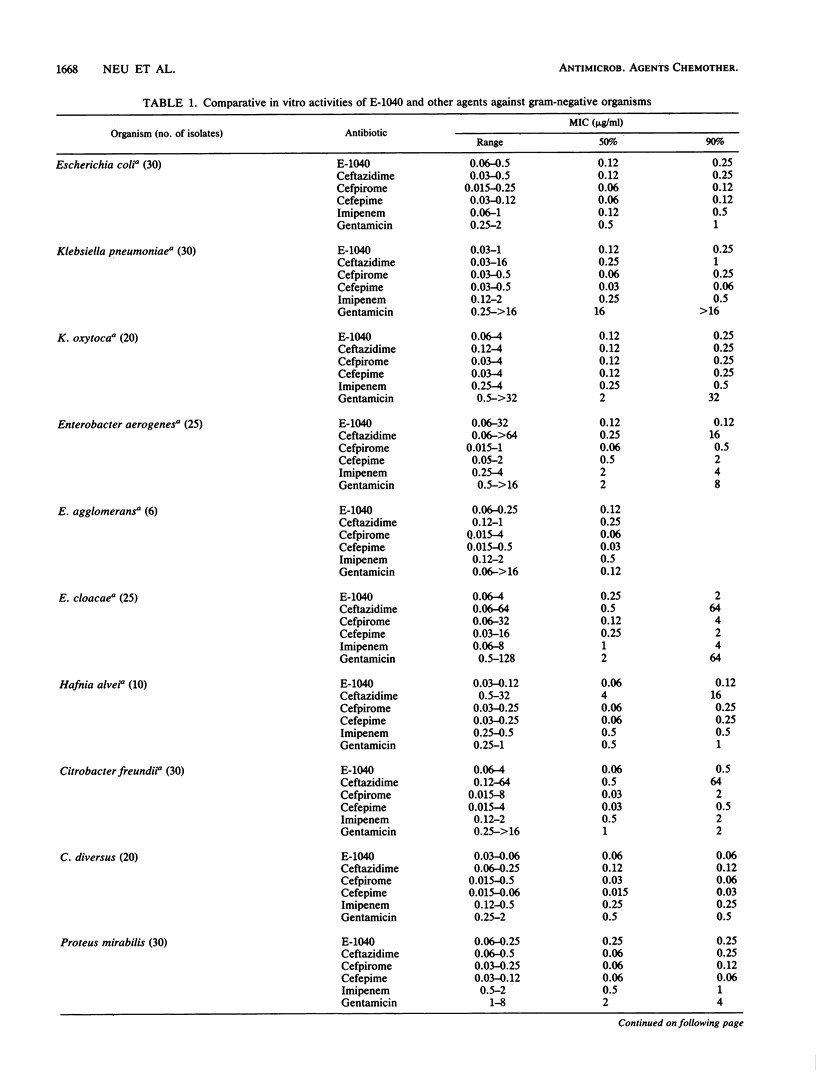
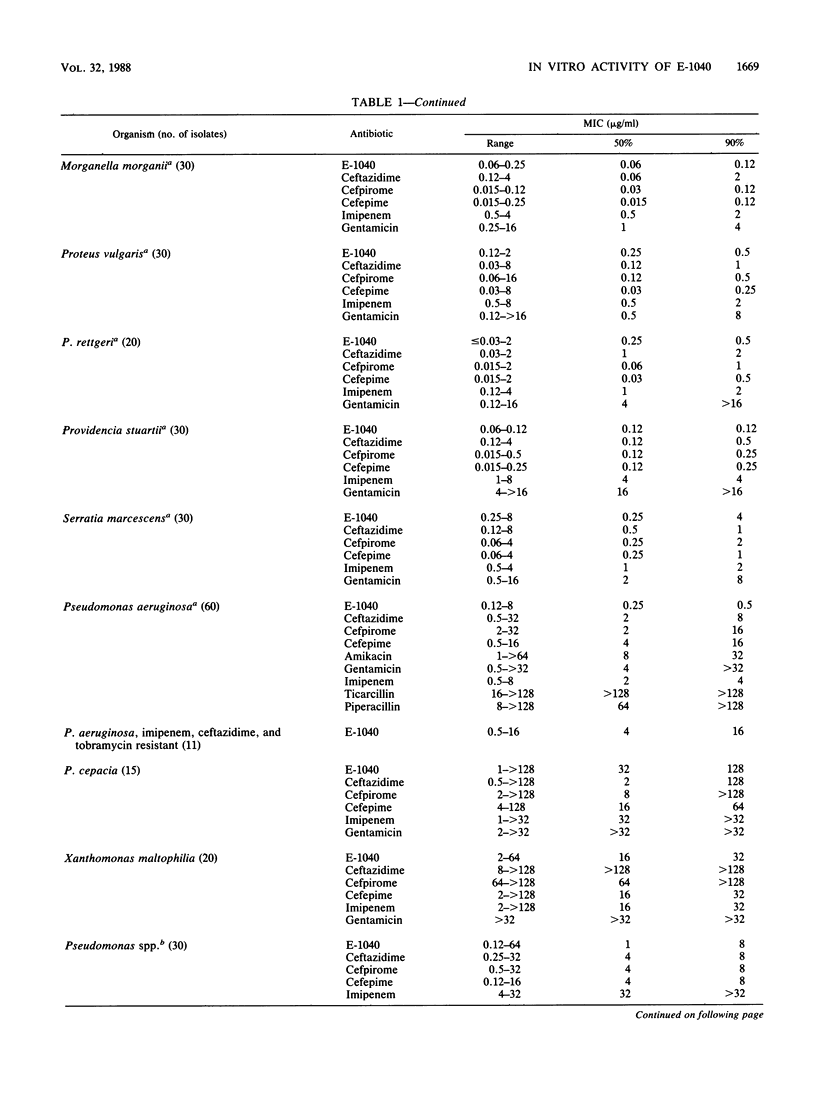
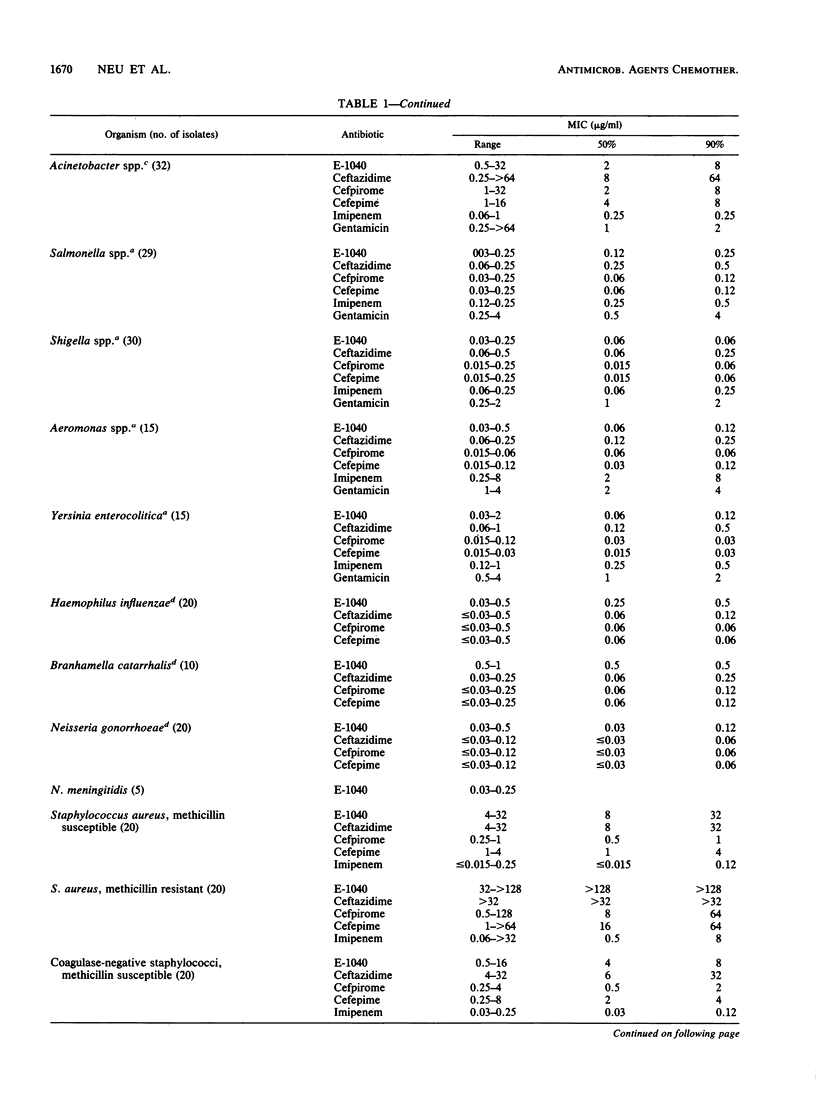
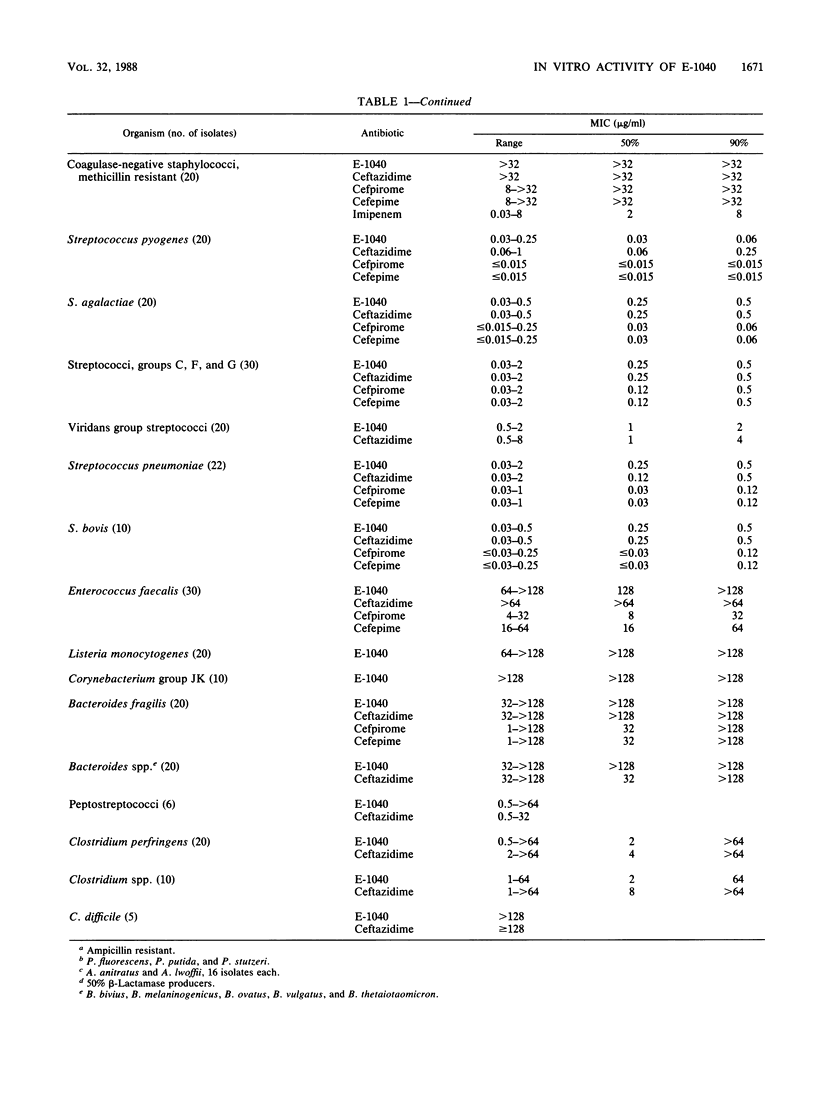
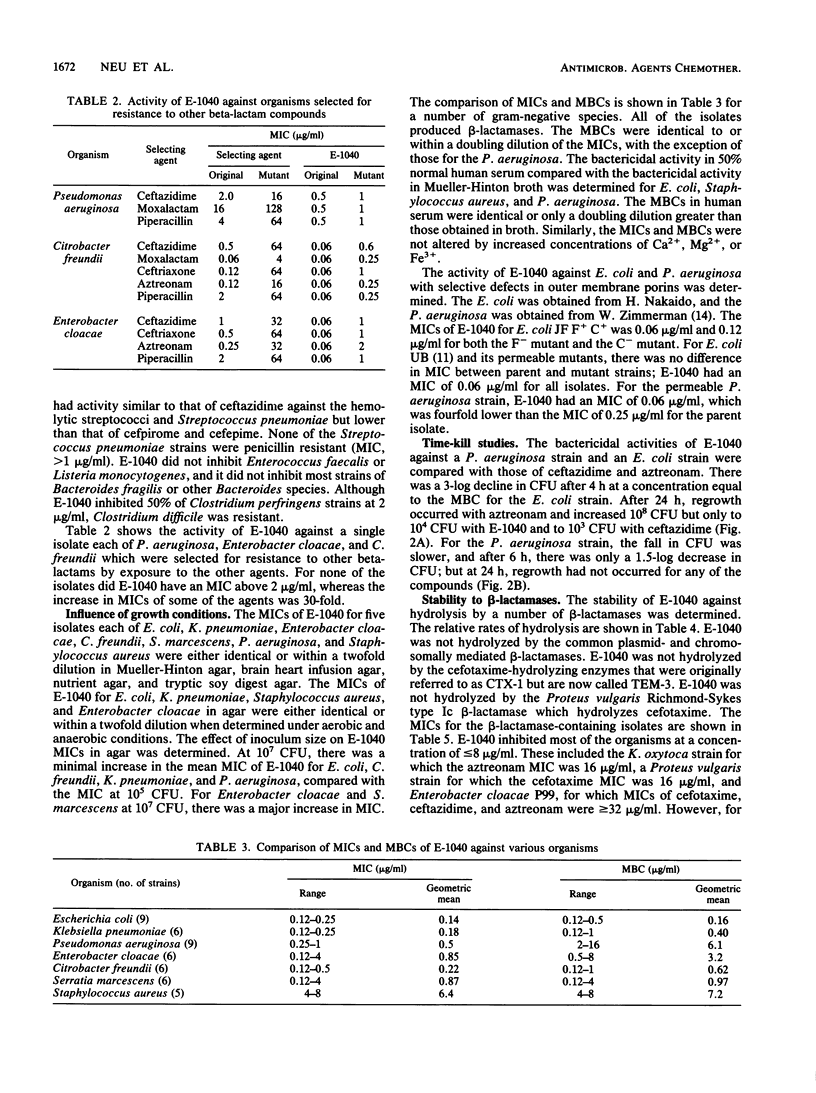
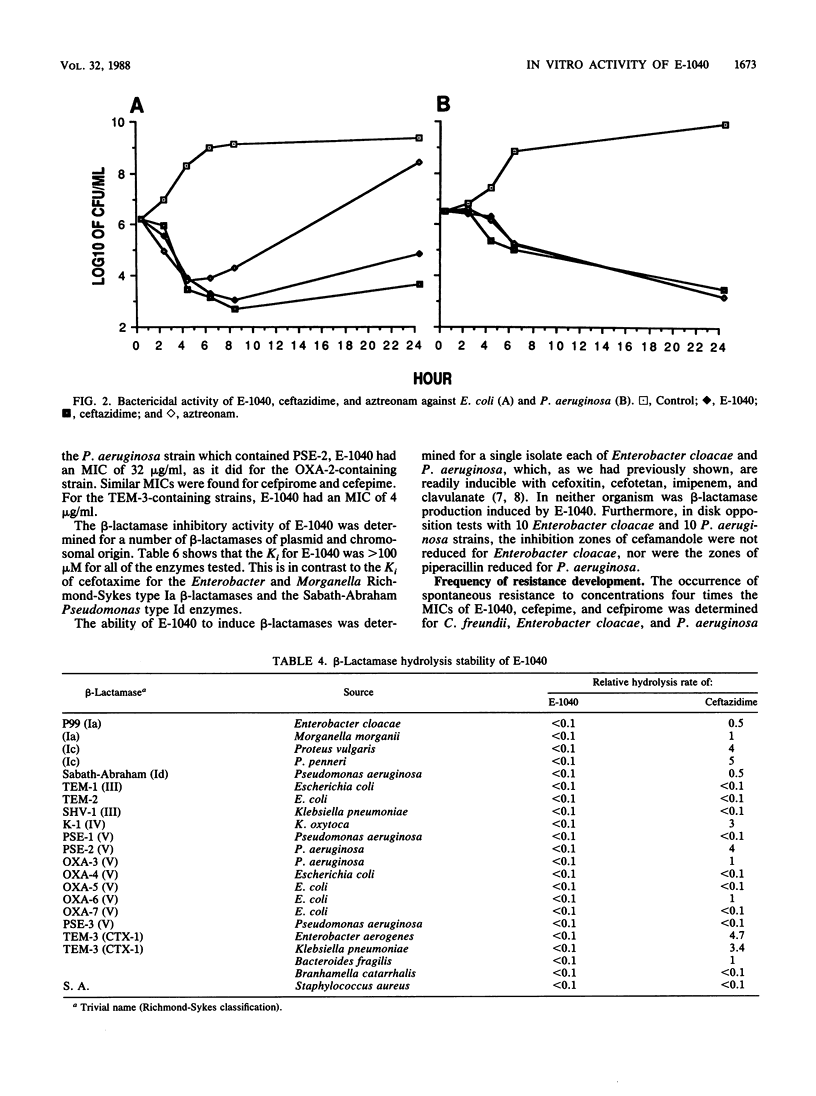
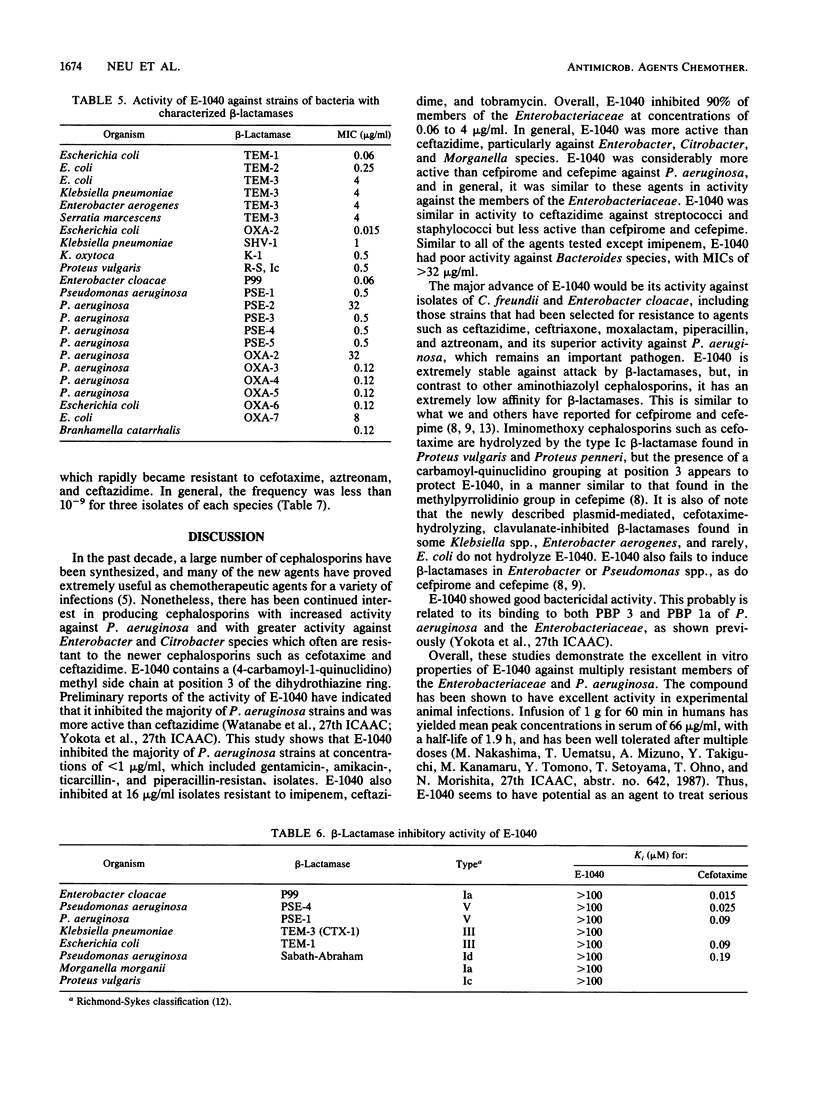
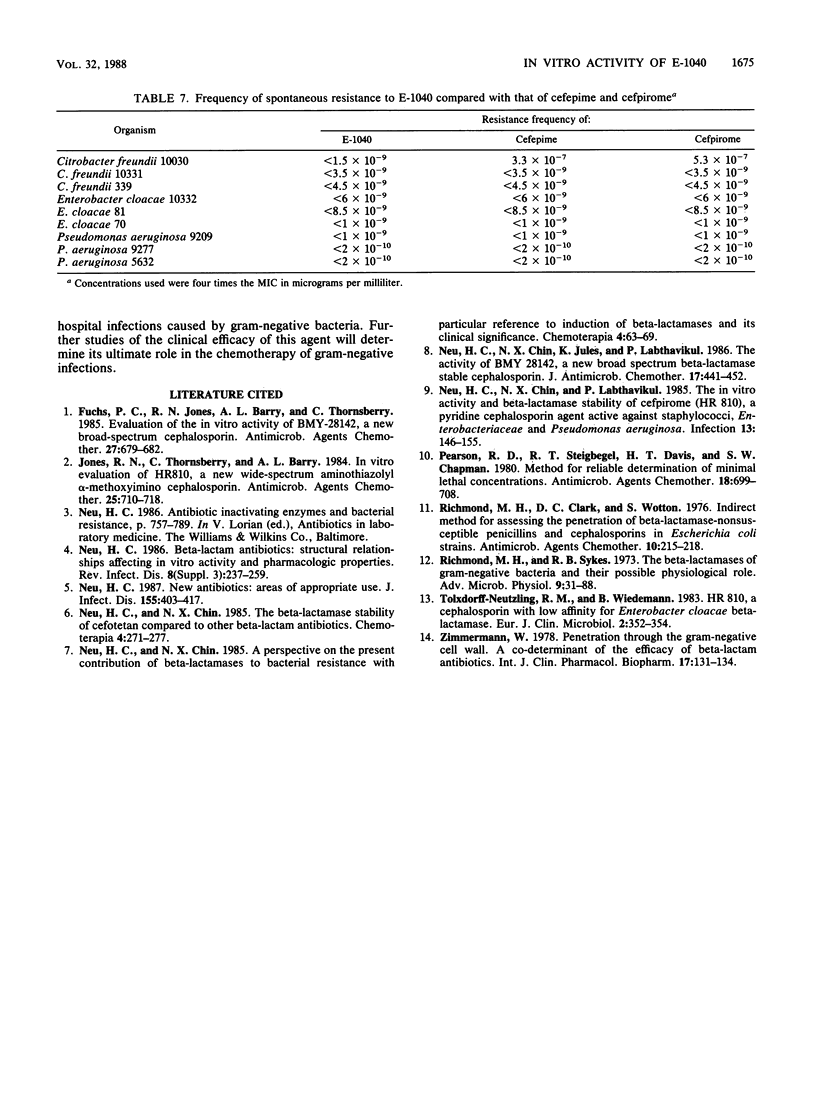
Selected References
These references are in PubMed. This may not be the complete list of references from this article.
- Fuchs P. C., Jones R. N., Barry A. L., Thornsberry C. Evaluation of the in vitro activity of BMY-28142, a new broad-spectrum cephalosporin. Antimicrob Agents Chemother. 1985 May;27(5):679–682. doi: 10.1128/aac.27.5.679. [DOI] [PMC free article] [PubMed] [Google Scholar]
- Jones R. N., Thornsberry C., Barry A. L. In vitro evaluation of HR810, a new wide-spectrum aminothiazolyl alpha-methoxyimino cephalosporin. Antimicrob Agents Chemother. 1984 Jun;25(6):710–718. doi: 10.1128/aac.25.6.710. [DOI] [PMC free article] [PubMed] [Google Scholar]
- Neu H. C., Chin N. X. A perspective on the present contribution of beta-lactamases to bacterial resistance with particular reference to induction of beta-lactamase and its clinical significance. Chemioterapia. 1985 Feb;4(1):63–70. [PubMed] [Google Scholar]
- Neu H. C., Chin N. X., Jules K., Labthavikul P. The activity of BMY 28142 a new broad spectrum beta-lactamase stable cephalosporin. J Antimicrob Chemother. 1986 Apr;17(4):441–452. doi: 10.1093/jac/17.4.441. [DOI] [PubMed] [Google Scholar]
- Neu H. C., Chin N. X., Labthavikul P. The in vitro activity and beta-lactamase stability of cefpirome (HR 810), a pyridine cephalosporin agent active against staphylococci, Enterobacteriaceae and Pseudomonas aeruginosa. Infection. 1985 May-Jun;13(3):146–155. doi: 10.1007/BF01642876. [DOI] [PubMed] [Google Scholar]
- Neu H. C., Chin N. X. The activity and beta-lactamase stability of cefotetan compared to other beta-lactam antibiotics. Chemioterapia. 1985 Aug;4(4):271–277. [PubMed] [Google Scholar]
- Neu H. C. New antibiotics: areas of appropriate use. J Infect Dis. 1987 Mar;155(3):403–417. doi: 10.1093/infdis/155.3.403. [DOI] [PubMed] [Google Scholar]
- Pearson R. D., Steigbigel R. T., Davis H. T., Chapman S. W. Method of reliable determination of minimal lethal antibiotic concentrations. Antimicrob Agents Chemother. 1980 Nov;18(5):699–708. doi: 10.1128/aac.18.5.699. [DOI] [PMC free article] [PubMed] [Google Scholar]
- Richmond M. H., Clark D. C., Wotton S. Indirect method for assessing the penetration of beta-lactamase-nonsusceptible penicillins and cephalosporins in Escherichia coli strains. Antimicrob Agents Chemother. 1976 Aug;10(2):215–218. doi: 10.1128/aac.10.2.215. [DOI] [PMC free article] [PubMed] [Google Scholar]
- Richmond M. H., Sykes R. B. The beta-lactamases of gram-negative bacteria and their possible physiological role. Adv Microb Physiol. 1973;9:31–88. doi: 10.1016/s0065-2911(08)60376-8. [DOI] [PubMed] [Google Scholar]
- Tolxdorff-Neutzling R. M., Wiedemann B. HR 810, a cephalosporin with low affinity for Enterobacter cloacae beta-lactamase. Eur J Clin Microbiol. 1983 Aug;2(4):352–354. doi: 10.1007/BF02019467. [DOI] [PubMed] [Google Scholar]
- Zimmermann W. Penetration through the gram-negative cell wall: a co-determinant of the efficacy of beta-lactam antibiotics. Int J Clin Pharmacol Biopharm. 1979 Mar;17(3):131–134. [PubMed] [Google Scholar]


